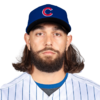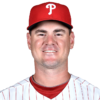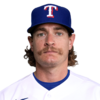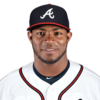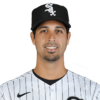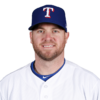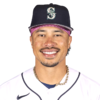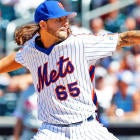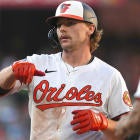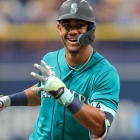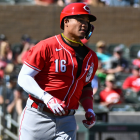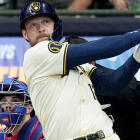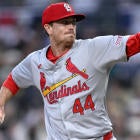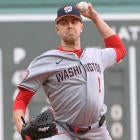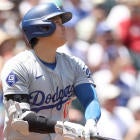it’s hard to say exactly what “sleeper” means in Fantasy sports. It’s one of those hard-to-define, “I know it when I see it” words.
Your “sleeper” may be my breakout, and my “sleeper” may be someone you don’t even want to draft in a deep mixed-league format. I usually come down around this definition when I look for sleepers: “Someone being taken late in drafts who can provide a huge return on your i
It’s not a perfect definition, and it leaves me searching through some pretty low-end names for my choices, but at least it gives me some parameters. Former top prospects and big names falling on hard times can make the list, as can no-names being overlooked.
For this list, I decided to go to FantasyPros.com’s consensus industry overall rankings to see who makes the cut. My parameters are simple: Anyone currently being ranked outside of the top 200 by the industry makes the cut.
Oh, ye of little faith. What more does Dan Warthen need to do to prove he has Cardinals-esque magic when it comes to wringing the most out of his pitchers? I know all about Robert Gsellman’s middling minor-league production, best summarized in his 6.5 career K/9. However, he got to the majors and fanned 8.5 per nine, and it might not have been such a fluke, thanks to Warthen.
In the minors, Gsellman was often credited with throwing a low-80’s curveball as his primary breaking pitch, and that was what he featured in the majors, throwing 75 of them. However, he also threw 144 pitches credited as either a slider or cutter, according to BrooksBaseball.com -- this is the near-mythic “Warthen Slider.” As with nearly every Mets’ pitcher, it is a recent addition to his arsenal, but it was already a weapon, as he racked up a whopping 19.4 percent swinging strike rate. That was by far the best mark of any of his pitches, a good sign for a new pitch.
The Mets have shown a tendency to turn otherwise middling pitching prospects into stars, and while it might be unfair to expect Gsellman to turn into the next Jacob deGrom, there’s a lot of room between deGrom and the No. 425 player.
Gsellman’s role isn’t assured as of yet, but if you’re drafting anytime soon, it’s worth taking that late-round flier on him now, because once he locks up a rotation spot, everyone is going to come for him. Because it might not be that unfair to think he could be the next deGrom.
Power doesn’t come at quite the premium it used to, but batters who can hit 35-plus homers are still a hot commodity. Tommy Joseph doesn’t have the track record of some of the league’s best power hitters, and his minor-league numbers are pretty uninspiring overall, with just 20.7 homers per-150 games and a .255/.306/.427 triple-slash line. However, he barely played from 2013 through 2015, logging just 457 plate appearances while dealing with concussion issues.
The Phillies moved him out from behind the plate in 2016, and the former second-round pick blossomed, hitting 26 homers in just 447 plate appearances between the majors and minors. He might just be a flash in the pan, but Joseph held his own against right-handed pitching, posting a .774 OPS and hitting 14 of his 21 homers off them. He’ll get a chance to play every day, and showed 35-homer potential as a rookie.
Fantasy players have been burned by Drew Smyly before, so I understand if you don’t feel like trusting him again. One of the most popular breakout candidates in the league a year ago, his homer issues led to a 4.88 ERA in 2016 for the Rays. His strikeout rate declined from 28.0 to 22.6 percent, and Smyly’s flyball tendencies burned him, as he surrendered 32 homers in the pitching-friendly confines of Tropicana Field. There isn’t much to like about the way his 2016 season went.
However, we’ve seen really impressive stretches from Smyly before, including a 3.11 ERA in 12 starts in 2015 amid shoulder issues. His 2016 was bad, but he might be one of those players who just needs a change of scenery. Seattle isn’t much of an improvement in home park for Smyly, but the Mariners could legitimately have the best outfield defense in baseball in 2016, with three center fielders set to patrol the outfield between Mitch Haniger, Leonys Martin and Jarrod Dyson. If Smyly is ever going to figure things out, this might be his best chance. And if the price is this low, I don’t make taking a flier.
There’s no way you can invest heavily in Garrett Richards this season, as he works his way back from a partially torn right UCL. He avoided Tommy John Surgery, but is already talking about a 100-pitch limit for the season, and that lowers his ceiling from the start. Even if he manages to stay healthy, Richards is probably going to go five innings in most of his starts, putting a sharp cap on how much value he can provide.
Of course, at some point, the reward is worth the risk, and this seems like a good spot. If you had to draft Richards in the 15th round, it would be tough to justify, but if he’s going to go around the reserve portion of your draft, he’s well worth the risk. We’re talking about a pitcher who has a 3.11 ERA and 1.164 WHIP over his past three seasons, so there’s no question he can be a difference maker. The injury concerns are real, but you might actually be able to use them to your benefit at this point.
Usually a name is enough to drive a player’s value higher than it needs to be, but everyone seems to have soured on Yasiel Puig. With a .260 average and only 22 homers over his past 183 games since 2015, it’s hard to argue. Sharp money seems to be betting on Puig never getting back to the level he was at in 2013 and 2014, and it’s hard to argue with that line of thinking. Fool me once, shame on you, fool me twice …
However, as with Smyly and Richards, you reach a point where you can’t get fooled again. Puig is probably done as an elite hitter based on the past two years. However, he’s just 26 and at least has injuries to blame for some of his struggles. That isn’t an excuse to draft him in the top 100 as we used to, but it seems like a pretty good reason to at least take a chance with a late-round pick.
Forget post-hype, Puig seems to be actively disdained at this point. There might be multiple owners in your league who won’t touch him at any price. There’s no need to be so strident, however. He’s still an elite talent, and even his struggles over the past two season have been somewhat oversold; he was still an above-average hitter in each season. His perceived value has probably fallen below where he actually is.
Despite playing just 110 games, Matt Holliday clubbed 20 homers in 2016, the 10th time he has hit that mark in 11 seasons. Sure, he only hit .246 and is heading into his age-37 season, but Holliday remained a productive player last season even at his advanced age. He continues to hit for both contact and power, and the low batting average can be explained at least somewhat by his .253 batting average on balls in play.
It makes sense to assume Holliday will be a low-BABIP hitter at this point in his career, but even that assumption leaves him room to grow from where he is. The big issue over the past few seasons has been injuries, but even that might not be as big a concern in 2017 with the DH spot available to him in New York.
If Holliday can stay healthy enough to play 130 games, he seems like a good bet for 20-25 more homers, especially with a nice upgrade in his home park. Older players tend to be undervalued in Fantasy, which can make Holliday a nice surprise for you bargain hunters out there.
Continuing with a recent theme, we have another older player everyone seems ready to give up on.
Gio Gonzalez stumbled to a 4.57 ERA in 2016, but otherwise looked a lot like the pitcher we’ve come to know -- mediocre control but enough strikeout ability and groundballs to make up for it. He wasn’t able to make up for it, of course, but he also had the sixth-highest gap between his ERA and FIP last season, a sign that he might have been the victim of some bad luck.
Gonzalez no longer has sub-ace upside, but it shouldn’t be hard for him to get back to the mid-3.00’s in ERA with a solid defense and lineup backing him. It just doesn’t make sense for him to be going behind the likes of CC Sabathia or Clay Buchholz, as early ADP data shows.
There is a chance, of course, that 244 ends up about 200 spots too high for Shawn Kelley, because the Nationals are rumored to be very much in the market for a closer. That doesn’t make much sense to me because, well, they’ve already got a pretty good one here.
It took Kelly a while to find himself, but he has harnessed his early control issues, walking just 4.9 percent of opposing batters last season. That has allowed him to take off.
Kelley has always had big strikeout numbers, but too many free passes and homers limited his utility. Those tendencies can give managers indigestion, and helps explain why the Nationals aren’t totally sold on their closer right now. However, with a 2.55 ERA and 11.8 strikeouts per nine dating back to the start of the 2015 season, Kelley looks pretty good to me.
Maybe a trade comes in and costs him his role, but if not, Kelley has top-10 closer upside on a team that should be a lock for 90 wins.
Matt Wieters, C, N/A
Average Rank: 242
There’s a pretty good chance Wieters jumps 100 spots in the consensus rankings before long, if only because nobody knows where he is going to play this season. Wieters’ continued presence on the free agency market has been a bit surprising, given how many teams could seemingly use a catcher with 20-homer upside. He hasn’t hit that level since 2013, however he did it three seasons in a row before injuries sidetracked him.
Wieters never developed into the star many expected him to be, but you don’t need to be a star at catcher to be worth drafting well before this. He went for cheap in both our recent NL- and AL-only mock drafts, which points to the uncertainty involved with him. However, it’s hard to imagine him just not getting a job at all. He’s a top-12 catcher in Fantasy when healthy and playing every day, and there isn’t all that much risk on the latter front at this point, despite his lack of a job right now.
Take him as your second catcher and reap the rewards when he eventually, inevitably finds a job.
Wong never quite lived up to the lofty expectations he brought to the majors, but he was a useful Fantasy option at second base before ultimately losing his job in 2016. He was actually sent to the minors amid his struggles, as his OPS fell all the way to .591 on June 5 before he was sent down. He hit .251/.341/.401 from that point on, albeit not in an everyday role, and showed an increased tendency to pull the ball and a higher hard-hit rate as well, as summarized well here.
If Wong can sustain those improvements, there is every reason to think he can get to the 15-15 level that would make him a Fantasy asset even in this current offensive environment. Not bad for someone who is probably going undrafted even in Roto leagues.


